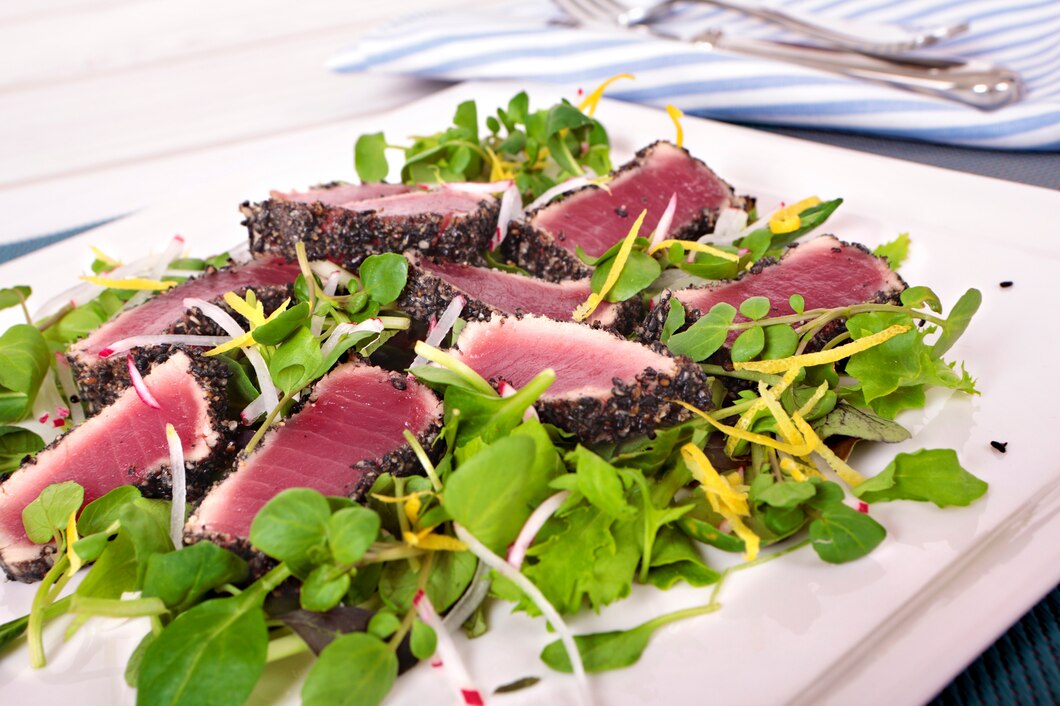Heavy metals like mercury, lead, cadmium, and arsenic can accumulate in the body over time, leading to serious health issues such as organ damage, neurological disorders, and even cancer. Unfortunately, some common foods can contain high levels of these harmful metals, often due to environmental pollution and industrial practices. Here are 10 foods that can be poisonous due to their heavy metal content, and what you need to know to protect yourself.
1. Tuna
Tuna, particularly larger species like albacore and bluefin, are known to contain high levels of mercury. Mercury accumulates in the fish’s tissues as they age, making large, predatory fish more dangerous to consume frequently. Mercury poisoning can lead to neurological issues, particularly in young children and pregnant women.
2. Swordfish
Swordfish is another large predatory fish that accumulates significant amounts of mercury. Regular consumption can lead to mercury toxicity, which can cause memory loss, muscle weakness, and impaired coordination.
3. Rice
Rice can absorb arsenic from the soil and water where it’s grown. Arsenic exposure over time has been linked to an increased risk of cancer, heart disease, and diabetes. Brown rice generally contains more arsenic than white rice because arsenic tends to concentrate in the outer layers, which are removed in the processing of white rice.
4. Shellfish
Shellfish like shrimp, crabs, and lobsters can accumulate cadmium, especially in polluted waters. Cadmium exposure can cause kidney damage and is a known carcinogen. The metal tends to concentrate in the digestive glands, so it’s often recommended to avoid eating the “green stuff” (tomalley) in lobster.
5. Leafy Greens
Certain leafy greens, like spinach and kale, can absorb heavy metals like cadmium and lead from contaminated soil and water. While these vegetables are nutritious, it’s important to source them from areas with low contamination levels to minimize risk.
6. Potatoes
Potatoes grown in contaminated soil can absorb lead, particularly in their skins. Lead exposure is especially harmful to children, leading to developmental delays and learning difficulties. Peeling potatoes can reduce the risk, but it doesn’t eliminate it entirely.
7. Chocolate
Cocoa plants can absorb cadmium from the soil, and this heavy metal can end up in chocolate products. While the levels are generally low, frequent consumption of chocolate, especially dark chocolate, can lead to cadmium accumulation in the body.
8. Canned Foods
Canned foods, particularly those stored in older cans with lead soldering, can be a source of lead contamination. Additionally, acidic foods like tomatoes can cause lead to leach from the can lining into the food. While most modern cans are made without lead, it’s still important to be cautious with older or imported canned goods.
9. Fish from Polluted Waters
Fish caught in polluted waters can contain high levels of mercury, lead, and other heavy metals. This is particularly a concern for fish caught in industrial areas or regions with high levels of environmental pollution. Consuming fish from such areas can lead to heavy metal poisoning.
10. Certain Imported Teas
Some teas, especially those from areas with contaminated soil or water, can contain lead, arsenic, and cadmium. The risk is higher for teas from regions with less stringent regulations on pesticide and herbicide use, which can contribute to heavy metal contamination.
While the presence of heavy metals in food is concerning, it’s important to remember that the risk of poisoning usually depends on the frequency and quantity of consumption. To minimize your exposure, opt for foods sourced from areas known to have low contamination levels, avoid large predatory fish, and be mindful of where your food comes from. If you have concerns about heavy metal exposure, consult a healthcare professional who can provide guidance on testing and reducing your risk.








